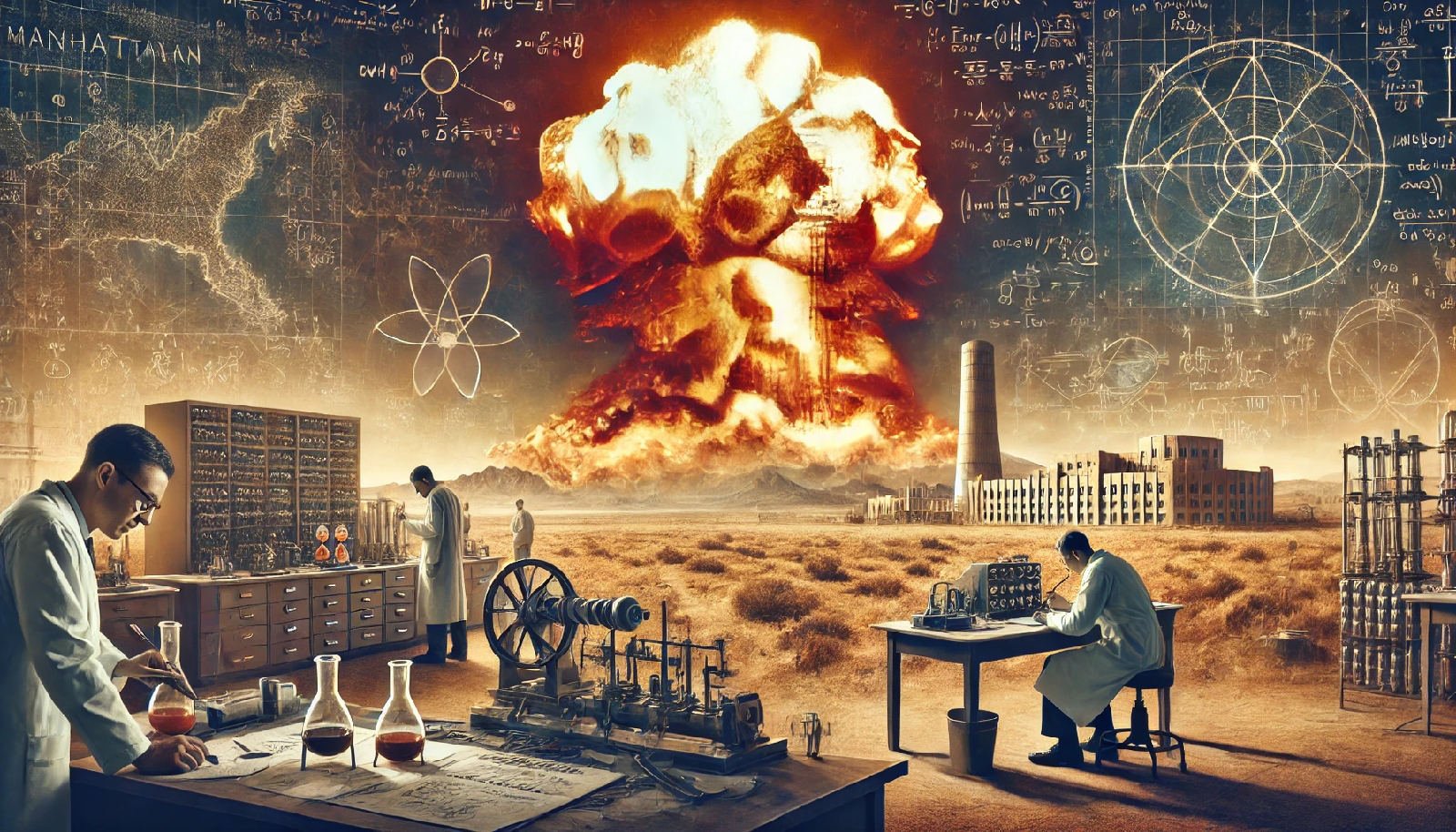Hi there, dreamers and deep thinkers! Let’s take a moment to reflect on a chapter in history that’s both groundbreaking and deeply unsettling. Today, we’re talking about the Manhattan Project—the World War II endeavor that unleashed nuclear weapons into the world. This isn’t just a story about science; it’s about the moral dilemmas and long-term consequences of wielding such devastating power.
What Was the Manhattan Project?
The Manhattan Project was a top-secret U.S. initiative during World War II that developed the first nuclear weapons. Officially launched in 1942, it was driven by fear that Nazi Germany might create an atomic bomb first. This fear sparked a race to harness atomic energy for destruction, an effort that would forever change our relationship with science.
Over 130,000 people worked on the project, often without fully understanding its purpose. It cost nearly $2 billion at the time, equivalent to over $25 billion today. What began as a desperate measure to end a brutal war became a Pandora’s box that still haunts us.
Why Did It Happen?
The seeds of the Manhattan Project were sown in fear and urgency. In 1939, Albert Einstein and physicist Leó Szilárd warned President Franklin D. Roosevelt that Germany was likely developing nuclear weapons. Their letter kickstarted efforts to create an atomic bomb, but was it the right path?
The project’s premise was rooted in the idea that the ends justify the means. But what if we had focused that brilliant energy on peace-building instead of weaponry? The rush to outpace an enemy blinded us to the long-term costs—both human and ethical.
The Science of Destruction
At its core, the Manhattan Project sought to exploit atomic fission, the process of splitting atoms to release immense energy. Scientists developed two types of bombs: one using uranium-235 and another using plutonium-239. Both required isolating rare isotopes through dangerous, labor-intensive methods.
What’s striking is how quickly this technology went from theoretical to devastatingly real. The same chain reaction that powers the sun was weaponized to destroy cities. It’s a stark reminder that scientific progress without ethical oversight can have catastrophic consequences.
Who Was Involved?
The Manhattan Project brought together some of the greatest minds of the time, including J. Robert Oppenheimer, Enrico Fermi, and Niels Bohr. At the helm was General Leslie Groves, a military man who ensured the project stayed on schedule. But leadership without moral reflection can lead to troubling outcomes.
Oppenheimer, often called the “father of the atomic bomb,” famously quoted the Bhagavad Gita after the first successful test: “Now I am become Death, the destroyer of worlds.” This haunting acknowledgment hints at the heavy burden carried by those who knew exactly what they had created.
The Turning Point: The Trinity Test
On July 16, 1945, the first nuclear bomb was tested in the New Mexico desert. The Trinity Test produced a blast more powerful than anyone expected, lighting up the sky and leaving an ominous mushroom cloud in its wake. Witnesses were awestruck, but many were also deeply troubled.
The test marked the moment science crossed a moral threshold. What had been a theoretical endeavor became horrifyingly real. Oppenheimer later admitted feeling a sense of dread, recognizing that this weapon could never be “un-invented.”
Hiroshima and Nagasaki: A Dark Legacy
Less than a month after the Trinity Test, the U.S. dropped two atomic bombs. On August 6, 1945, a uranium bomb code-named “Little Boy” was dropped on Hiroshima, Japan. Three days later, a plutonium bomb called “Fat Man” devastated Nagasaki.
The results were catastrophic. Over 200,000 people died, either instantly or from radiation sickness in the following months. These bombings remain the only instances of nuclear weapons being used in warfare.
Supporters argue the bombings ended World War II quickly and saved lives by avoiding a prolonged invasion. But at what cost? Targeting civilian populations with weapons of such indiscriminate destruction set a chilling precedent. To this day, these bombings remain a source of deep moral and ethical debate.
The Fallout—Ethical and Literal
The Manhattan Project didn’t just end a war; it opened the door to the nuclear age. Countries around the world began racing to develop their own nuclear arsenals, leading to decades of Cold War tension. The specter of nuclear annihilation still looms over humanity.
For many scientists involved, the aftermath was devastating. Oppenheimer became an outspoken critic of nuclear proliferation, clashing with government officials who wanted to expand the U.S. arsenal. The project’s legacy is a cautionary tale about the dangers of pursuing knowledge without considering its broader implications.
Lessons We Must Heed
The Manhattan Project serves as both a triumph of human ingenuity and a failure of moral responsibility. It demonstrates our capacity to solve incredibly complex problems—but also our tendency to use those solutions for harm. What if we had channeled that same energy into ending war through diplomacy or addressing global inequality?
This chapter in history challenges us to ask hard questions. How do we ensure that scientific advancements serve humanity rather than destroy it? And how do we hold ourselves accountable for the choices we make in the name of progress?
Moving Forward
The Manhattan Project is a sobering reminder of the dual nature of human innovation. We are capable of creating wonders, but without wisdom, those wonders can become weapons. It’s up to us to learn from the past and chart a path that prioritizes peace, justice, and sustainability.
As you ponder this moment in history, think about the choices we face today. From artificial intelligence to climate change, we are once again at a crossroads. Let’s make choices that reflect our highest values, not our darkest fears.
Stay curious.




